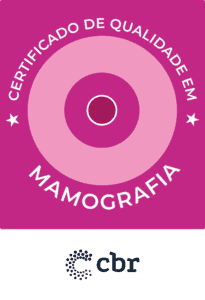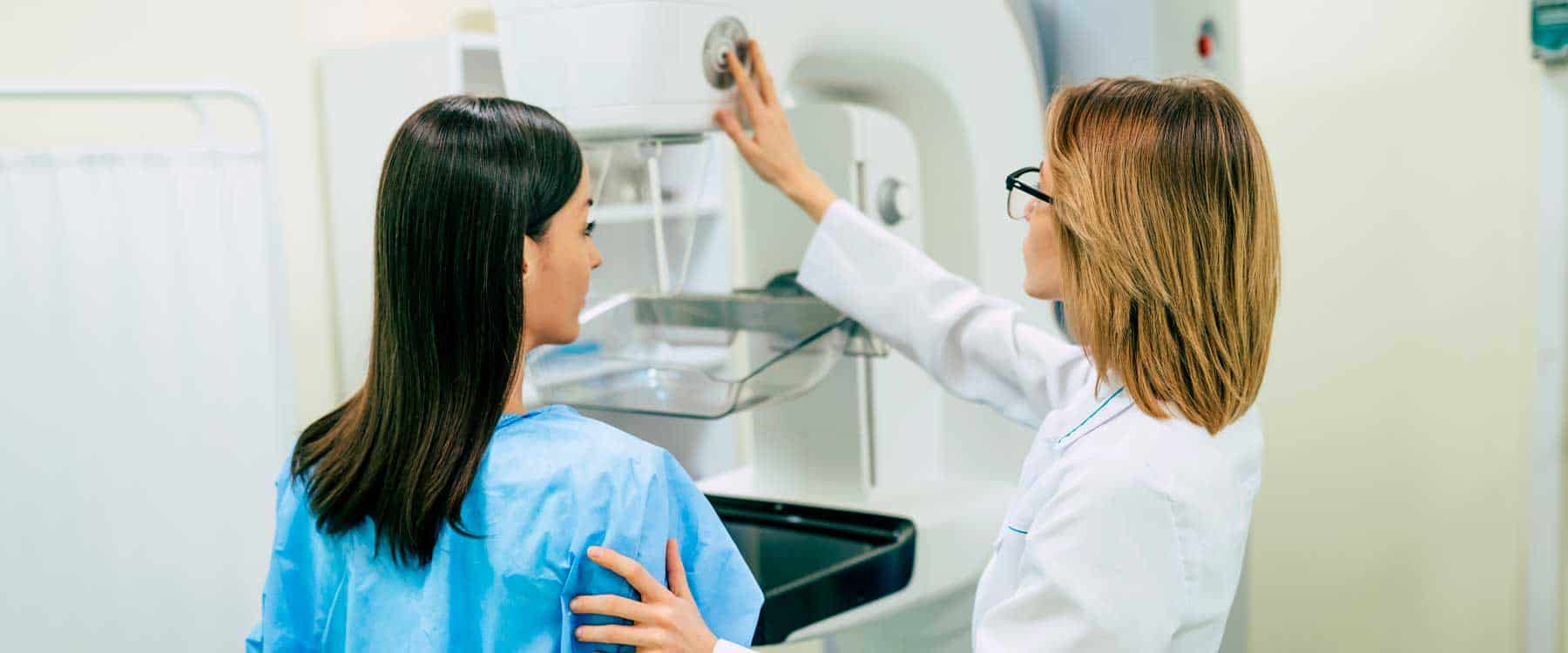Certification in Mammography was a pioneer, paving the way for other subspecialties. Get to know a little about the history, characters, challenges and achievements of this victorious trajectory

By Marcelo Balbino
The first CBR Seal of Quality, in Mammography, has a history. Chapters and more chapters that were being built and that remain active, in constant renewal and improvement. It was based on it, and on the joint and pioneering effort, that new care and protocols for the diagnosis of breast cancer in the country were designed, an initiative that was also implemented in other subspecialties.
Its creation is considered very relevant in the health scenario, as it takes into account a new way of thinking and acting, based on quality criteria and rules aimed at constant improvement. A path that has been strengthened and that currently signals the permanent concern and evolution of diagnostic services in the segment, aimed at saving thousands of lives a year.

the beginning of everything
In the early 1990s, the CBR, then chaired by Dr. Hilton Augusto Koch, formulated a proposal together with the National Nuclear Energy Commission (CNEN). The objective was to suggest a survey of Mammography Services installed in Brazil and map the capacity of these instruments to supply qualitative and quantitative aspects necessary for a program with the public health network.
At the time, it was determined that all those who agreed to participate in the screening (screening), they should satisfy the criteria established by CBR and CNEN, on image quality and radiation doses. In this On a voluntary basis, the first participants were submitted to the recently created Quality Certification Program for Mammography Services, with the right to a Qualification Certificate and a Quality Seal for those who passed.
From this time, Dr. Norma Médicis from Albuquerque Maranhão (PE), recalls that the group's first meeting took place at the CBR headquarters in Brasília (DF), during an event. For her – who accompanied the birth of the Quality Program, of which she was also the Coordinator for a long time and today continues to be part of the Technical Committee – it is necessary to always be present. “We have to embrace the techniques, stay on top of the processes in a daily struggle, but it is something that for me is rewarding”.
Also a member of the same initial team, Dr. José Michel Kalaf, who is currently a consultant for the RCC Radiologia Clínica in Campinas (SP), was part of the CBR quality commissions for many years. “It was a very fruitful job, carried out with dedication, alongside distinguished and competent colleagues. Among the biggest challenges, I highlight obtaining data at the national level on the panorama of Breast Radiology in relation to the variety of equipment and mammographic exams performed”, he evaluates. For him, the main victories of the program are the improvement of patient care; the best quality control; standardized communication and also advances in research.
upgrade to grow
One of the great merits of the first Quality Certification Program in Mammography in Brazil is described as its ability to closely monitor its time, context, problems and situations experienced. Only by delving into the reality of the segment was it possible to determine circumstances, difficulties and thus discuss and implement improvements, strengthening the role of the radiologist, the conditions of his work, in addition to procedures and standardization in the use of equipment.
In this way, the implementation of a quality program improved the various issues encountered, such as high doses of radiation due to lack of control over machine calibration; standardization of image presentation, patient positioning during exams, among many other verified points.
In addition to the standardization of exams and so much progress achieved in procedures that can save lives, the concern with quality also promoted an advance in learning systems, professional conduct and use of equipment. In this sense, Dr. Kalaf points out that the CBR Quality Certification contributed to the professionalization and growth of the subspecialty in the country. “The program provided better conditions for publicizing the specialty, with an emphasis on quality and early diagnosis. In addition, it promoted the maintenance and expansion of teaching conditions and the perfect integration with the modern techniques available”.
The maturation and progression of the subspecialty was also a concern of the CBR, as a spokesman for the dissemination of quality, technical knowledge, as a driver of education and strengthening of the sector. “When the program was born, there was no specific course, there was nothing. It is a continuous education, always stimulated by our committee. It is uninterrupted and vital work, with virtual and face-to-face meetings periodically”, says Dr. Standard.
Some steps on the growing trajectory
In January 1992, the CBR Bulletin, at the time printed in black and white and called CBR Informative, already reported: Qualification Certificate will be approved in April. The news said that the CBR intended to institute a Qualification Certificate provided to services that present certain requirements. Subsequently, the announcement was made on April 24, 1992, during a meeting of the Mastology Committee. On the occasion, after debates, the definitive criteria for granting the Certificate of Qualification in Mammography were ratified.
In March 1992, with the newborn program, the same communication vehicle announced: Qualification Program already has more than 200 registered services. The encouraging report also featured comments by Dr. Dakir Lourenço Duarte, from the Executive Committee, on the importance of the program and its first repercussions.
In July of the same year, the CBR Informativo mentioned that the demand for the Quality Certification Program was exceeding expectations, with at least 80 services already requesting the necessary materials to participate in the certification processes.
In February 1993, the CBR presented a survey of mammography facilities in the country, which totaled around 400 pieces of equipment. Of this total, almost 50% were already engaged in the Maintenance and Quality Program. In the same edition, a partnership was announced between the CBR and the Cooperation of the National Nuclear Energy Commission (CNEW) with the aim of streamlining processes related to equipment dosimetry.
The news on the cover of the June 1993 CBR Newsletter left no doubt about the concern with quality and adherence to the program, bearing the following title: Quality Control in Mammography: more than 500 services involved in the CBR program.
The report mentioned the support given by the Ministry of Health to the program, as well as by the National Nuclear Energy Commission. At the same time, the CBR emphasized the need for correct and complete data filling in the participation forms of the interested services.
In this trajectory, in February 1997 (CBR Newsletter number 108, page 16), the results of the evaluation of equipment and accessories for mammography exams in the Quality Control Program in Mammography were published. According to the report, of the 305 mammograms enrolled in the program at the time, 186 (61%) were approved, among the various established criteria.
A few years later, more than 600 diagnostic services in the country were mobilized in the CBR quality processes, according to a report published in June 1999. Moving forward, after many meetings, new partnerships and updates, the new Quality Seal was news in June 2002. As early as 2006, the cover story of the CBR Bulletin indicated a personalized stamp for each of the four Quality Commissions: Mammography; Ultrasonography; Computed Tomography and Magnetic Resonance.
On April 20, 2006, the CBR signed a Technical Cooperation Agreement with the National Cancer Institute (INCA). The objective was to adjust the radiology and diagnostic imaging services offered in mammograms performed by the Unified Health System (SUS). As a parameter, the criteria established by the CBR would be used. After evaluation and interview, the service provider would receive a certificate valid for three years and permission to use the Seal of Quality in Mammography.
Awareness, culture change and much still to be done
To better understand the context and importance of the CBR Mammography Quality Program, we spoke with Dr. Norma Maranhão (PE). Present since the beginning of the work, in 1992, she spoke about her experience in the subject and highlighted weapons and challenges encountered in the prevention of breast cancer.
Does the commission carry out practical and bureaucratic work?
Dr. Norma Maranhão: We meet to check the quality of practical exams, doctors, radiation dose, quality of medical diagnoses and certificate, in addition to opinions for the creation of protocols. Today the internet facilitates and hinders us, aligning with literature. For example: the news came out that mammograms lead to thyroid cancer. We researched the literature and found that it has nothing to do with this, so we need to demystify this news. There we prepare documents and protocols to send to the competent bodies. So we also have bureaucratic issues to assess.
How is the seal renewed and what is its importance for the patient?
The Seal of Quality lasts for three years and after that period we meet to evaluate new images, new tests to keep the service within the quality processes and then extend it for another three years. If you have any problems, we request adjustments until the service reaches quality standards. The agreements also request the admission of the seal and we are the ones who take care of that. For the patient, it is important to have these quality standards, with the correct doses of radiation, standardized procedures.
Do most women know that early diagnosis can be the start of a victorious battle against breast cancer?
Dr. Norm: Usually it is said that the patient has a chance of being cured of breast cancer. An unidentified injury can represent a lost opportunity to save a life. On the other hand, the detection of a really early lesion offers a great chance of clinical cure, with adequate treatment.
Are the campaigns insufficient? What kind of guidance should be passed on to the female population?
Dr. Norm: Yes they are insufficient. We need to raise awareness in the community through more frequent breast cancer prevention campaigns, in addition to educating women so that they can have their own monthly breast exam, visit their doctor annually and also have their annual mammogram after the age of 40. I would also like to point out that in terms of the Quality Control Program in Mammography, more important than obtaining the Seal of Quality is the specialist's awareness of the need to offer his patient a constantly safe diagnosis.
What was discovered with this work, after evaluations carried out in clinics and hospitals throughout Brazil?
Dr. Norma: It turned out that there is still a lot to do, including in terms of changing the culture. For many centuries it has been said that “the clinic is sovereign”. This paradigm was partly overthrown with the advent of radiology, particularly when it comes to characterizing subclinical breast lesions. Here, the image is paramount and therefore the responsibility of the radiologists who work in this area is very great. We also emphasize the importance of teaching Breast Radiology, which has been occupying a prominent place in the programming of congresses and seminars held in the country, always guaranteeing a wide attendance of specialists in the area. Likewise, continuing education courses in breast radiology have been in growing demand.
CBR Quality Seal: the guarantee of rigorous standards
Currently, more than 200 active clients are covered by the CBR Quality Seal Program. The pioneer was born in 1992, in the subspecialty of Mammography and expanded to the areas of Ultrasound, Computed Tomography and Magnetic Resonance.
As a result, each of them brings the objective of promoting more quality and safety for patients in all exams performed. The seal represents a guarantee of rigorous standards, indicating that the clinic or hospital has been submitted to CBR evaluation, thus guaranteeing the technical quality of the images and test reports. Therefore, the benefit of the seal extends to doctors, health operators and, mainly, to patients.
Currently, the evaluation process for obtaining the CBR Quality Seal is carried out in a simple and automated way. The certification steps take place autonomously on a digital platform and can be accessed by those who wish to be evaluated.
The program has national coverage and evaluates the quality of the method that the clinic or hospital uses. It is a voluntary, confidential and impartial process, and can be adapted to any size or size of diagnostic imaging service.
For each of the areas that make up the CBR Quality Seal Program, there are committees composed of several specialized radiologists. The groups function autonomously and inclusively, without punitive characteristics and are composed of representative members with extensive experience in the respective method.
In the year that CBR celebrates 30 years of its first Quality Program, follow the words of the current Coordinator of the National Mammography Commission below.
National Mammography Commission: 30 years of struggle and dedication!
By Linei Urban, coordinator of the CBR National Commission on Mammography
Promoting a culture of quality is essential in all sectors, especially in health and radiology. This concern was introduced in Brazil in the 1990s, when several quality management models were implemented. It was in this context that the Brazilian College of Radiology, as a true precursor and pioneer in quality management, implemented the first Quality Certification Program in Mammography in Brazil, in 1992. We must always remember and praise the work of the visionaries of this project, like Dr. Hilton Koch, president of the CBR at the time, Dr. Dakir Duarte, as the first coordinator, as well as the first members who were part of the commission: Norma Maranhão, Radiá dos Santos, José Michel Kalaf, Carolina de Azevedo, Elvira Marques, Maria Inez Gadelha and João Emílio Peixoto. Their work and effort started the path that bears fruit even today, 30 years later!
This project evolved according to the problems detected and, as a result, improvements were observed in mammography exams in Brazil. In the first phase of the program, the main reasons for failure were the high radiation doses used by devices that were not always calibrated, as well as the positioning of the exams, which did not allow for an adequate visualization of the breast. Training courses were held for technicians, and the importance of calibrating mammography equipment was reinforced. After this phase, it was observed that the clinical quality of the images sent did not always meet the standards necessary for early detection, related to several problems, including inadequate compression of the breasts or the use of films or non-specific printers. A new approach was performed and an improvement was observed in this regard. Currently, what draws the most attention are the problems related to the quality of interpretation and test reports. Therefore, a new phase with training courses for interpreting doctors is being carried out. This is how the National Mammography Commission contributes to improving breast cancer detection and, consequently, to improving survival and quality of life for women in Brazil.
It is important to remember that the work of the National Mammography Commission was never limited to the Mammography Quality Certification Program. He also acted in several areas, issuing opinions and guidelines on topics of importance to breast radiology, such as the use of thyroid protectors and other shielding for the body during mammography or on the types of monitors suitable for mammography interpretation, among others. He participated in several impact publications, such as the translation of Atlas BI-RADS editions or the guidelines for Breast Cancer Screening in Brazil, together with the Brazilian Society of Mastology and the Brazilian Federation of Gynecology and Obstetrics, with the first publication in 2012, the second in 2017 and the third now, in 2022.
There are several challenges for the coming years of the National Mammography Commission. Among them, expanding the number of clinics participating in the Quality Certification Program in Mammography and, consequently, women's access to quality screening. Improve women's awareness of the importance of early detection of breast cancer. Improve everyone's access to quality information with scientific backing, combating the so-called fake news. Contribute to public health programs in order to bring the real benefits of early detection to the population. This is our fight! And here's to the next 30 years!
* Article published in issue 398 of CBR Bulletin, in April 2022
Read too: ECR 2022 will pay tribute to Manoel de Souza Rocha, former president of CBR



